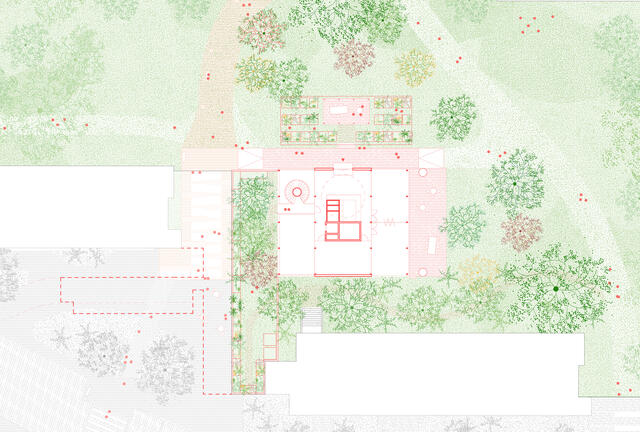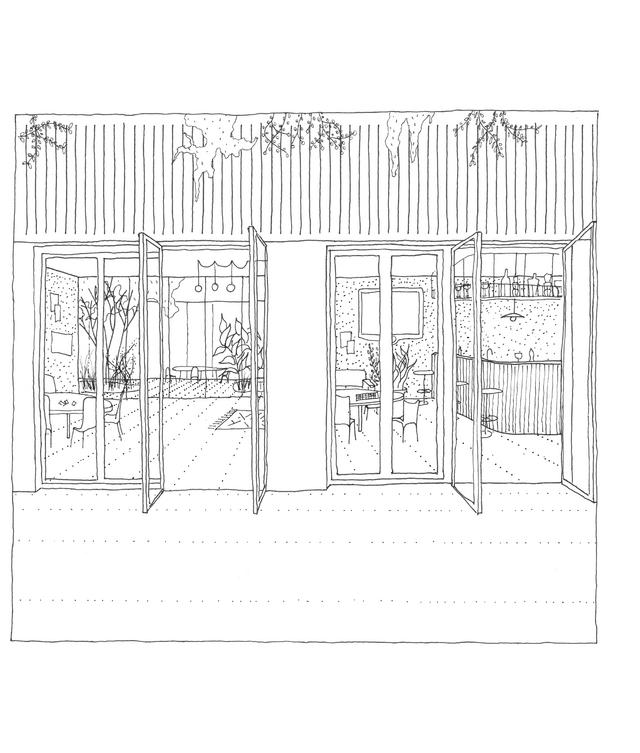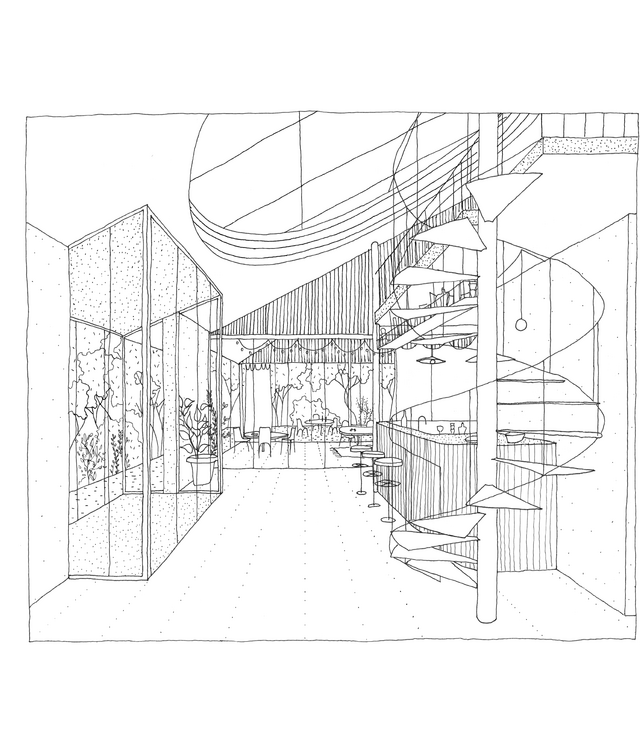The new Millenium Community Centre, at the interface of two public spaces.
1000 Bruxelles
Belgium
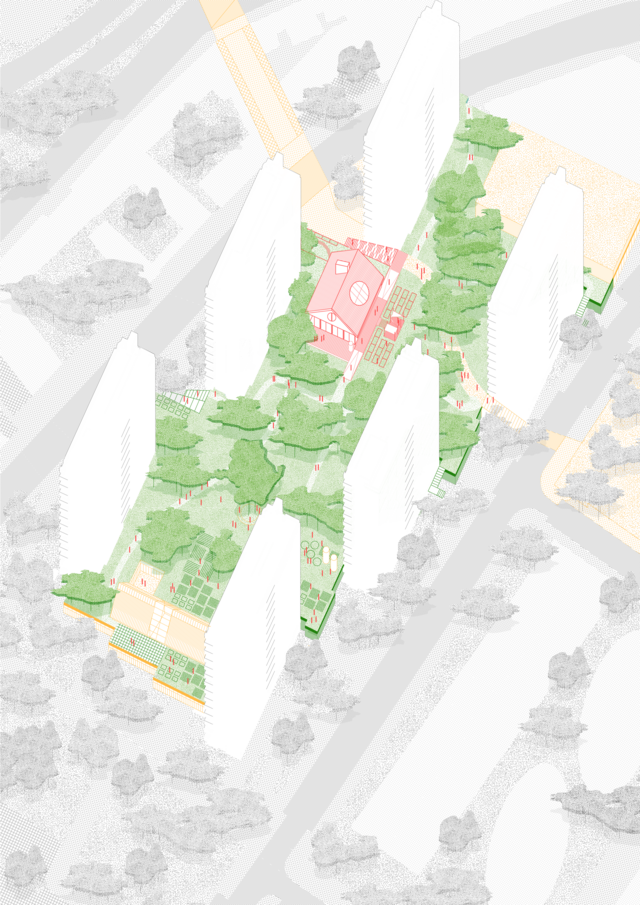

The renovation project for the Quartier Nord, initiated in 1967, aimed to free pedestrians from the constraints of the highly imperfect grid layout of this former suburb. This layout was indeed far from perfect for pedestrians, particularly because the country's first railway line, which ran along what is now the Avenue de l'Héliport, set the boundaries, resulting in a series of adjoining industrial building facades that, until recently, formed an impenetrable barrier to the Allée verte and the canal. The Foyer Laekenois esplanade was part of a more global design for a continuous surface, but ultimately ended up as an urban barrier, also along the Avenue de l'Héliport.
This obstacle has led to all urban policies evolving towards the idea of creating pedestrian facilities and public spaces as a connecting axis between the Gaucheret district and Tour & Taxis, via the future harbour park and the newly designed access along the Klavertje Vier primary school. This axis enables the articulation of metropolitan spaces with a focus on everyday living spaces, such as the planned redevelopment of the esplanade park in the SNC.
The Community Centre project contributes to these aims.
At the level of the esplanade, the new Community Centre connects with and becomes part of the series of facilities formed by the new urban farm, the Children's Centre and the Pôle Nord cultural centre, thus naturally defining two large distinct areas for the park.
This location also creates a natural transverse axis and gives it a face. But more fundamentally, the new position of direct access aims not only to generate an inter-neighbourhood axis, but also to create a genuine network to overcome the double urban barrier of the Avenue de l'Héliport.
The strategic location of the new Community Centre can bring these connections to life and create new dynamics on various levels.
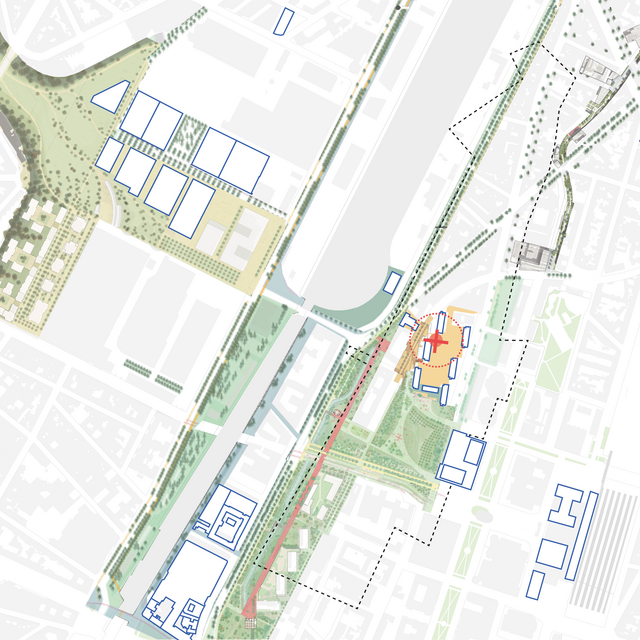
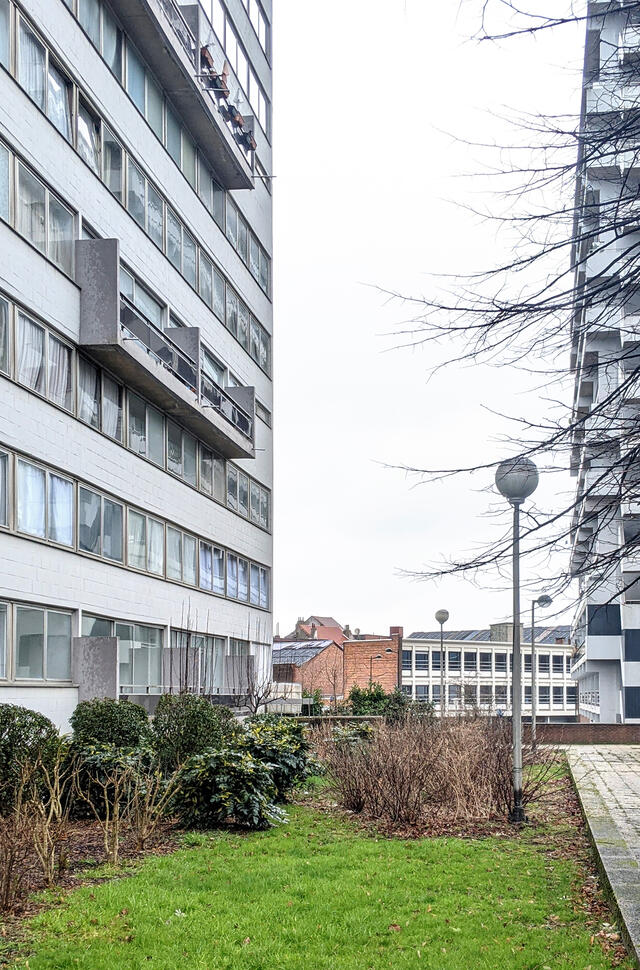
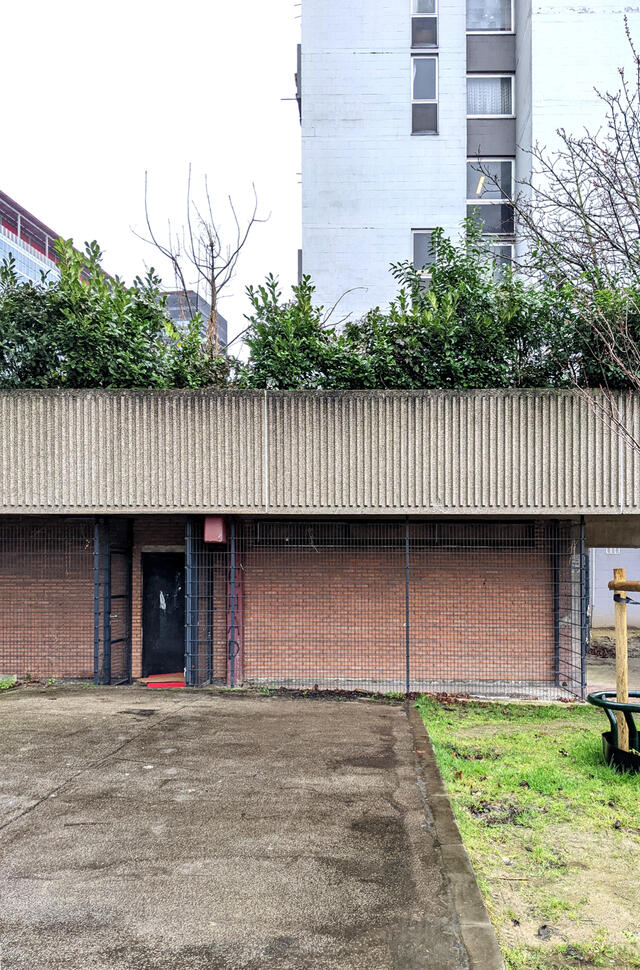
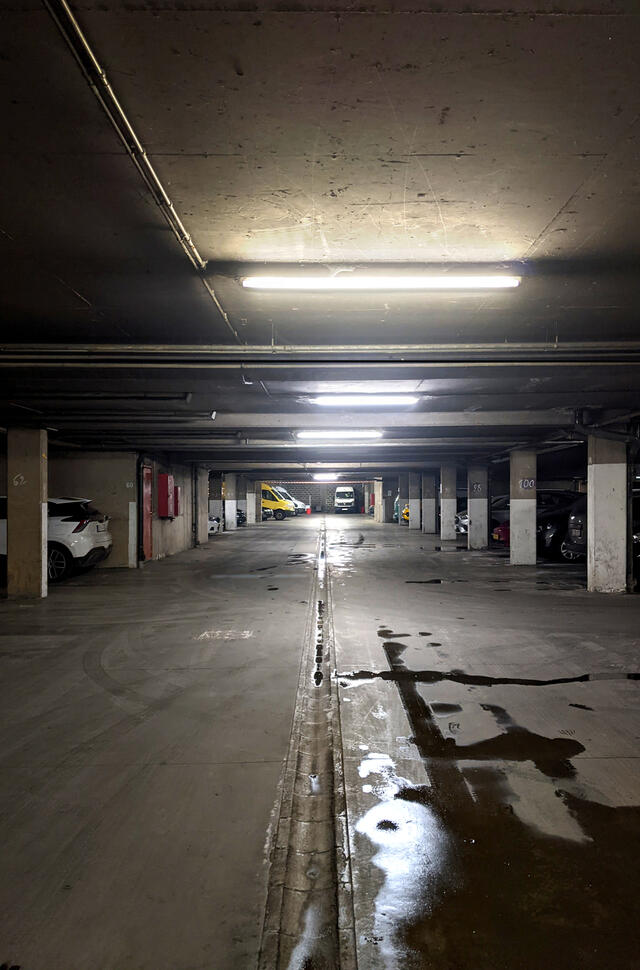
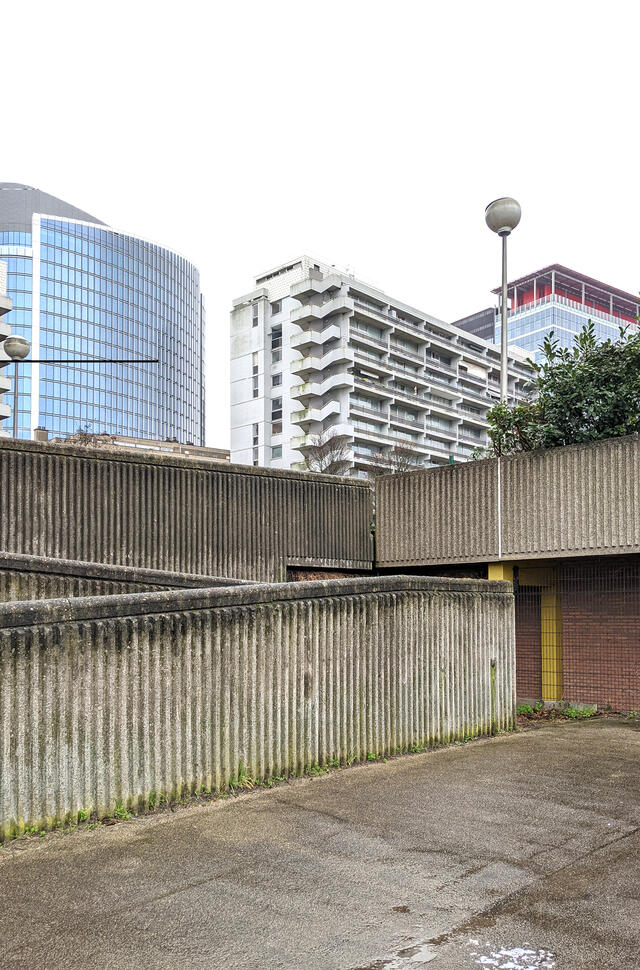
A new urban feature that shapes the forecourt
The desire to create a network is evident in the design of a connection to the esplanade that is as clear as possible, via a monumental staircase-ramp that shows how the urban space blends harmoniously with the appearance of the ground floor of the Community Centre.
This design also makes it possible to activate the base of the residential tower, which extends along the forecourt, where its location allows a frontal perspective to be created.
Above the esplanade, the Community Centre takes the form of a large hall that is visible from the public space and takes on the archetypal aspect of the large double-pitched roof of both the new city farm and the former tram depot that was renovated for the Pôle Nord cultural centre.
The presence of the community centre on the ground floor and the demolition of the existing ramp will free up public space. The paving of the forecourt is intended as an extension of the recent design, which offers more permeable spaces for planting vegetation and rainwater infiltration.
One of the objectives of the project and the design of the forecourt is to ensure continuity with the planned breakthrough to the canal.
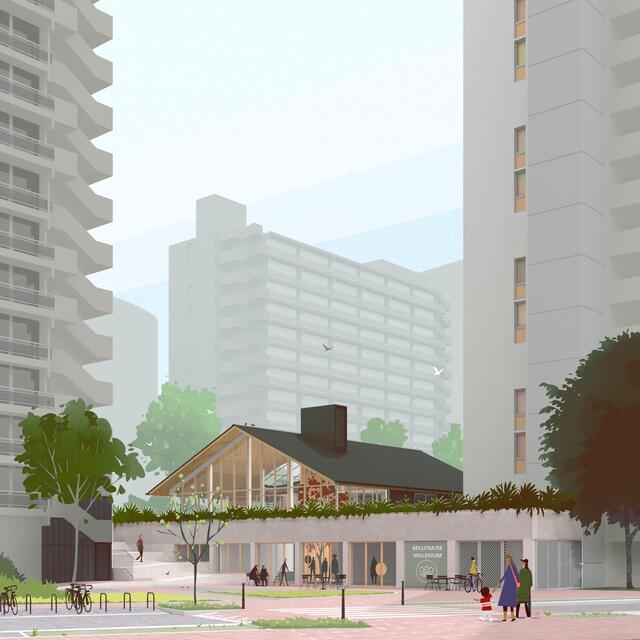
Homely architecture for the esplanade park
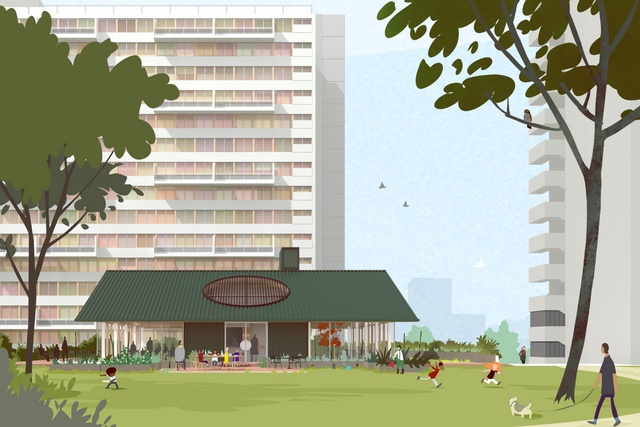
The Community Centre is divided into two levels. The first, anchored in the plinth of the esplanade, houses the metropolitan programmes: a social bar adjacent to a multipurpose hall, a social assistance office and computer and literacy workshops. The second rests on the esplanade and meets the specific needs of the neighbourhood: multipurpose rooms linked to their own bar and a multifunctional kitchen.
These two volumes are arranged around a central double-height atrium. This screens off traffic and connects the interior of the block with the new landscaping: a vegetable garden, a new forecourt, an open space for food production. The atrium also provides a green extension to the multipurpose hall and bathes all the spaces located in the plinth of the esplanade in light.


